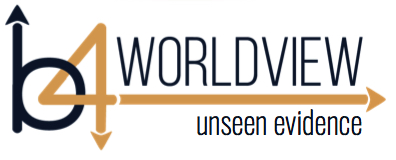
Key Thought for this session:
“Without the context of a bigger stage, BEING TRUE TO SELF is a flattering allegiance to bias and voices of deception.”
I know how it feels to be confronted with my faults. I find it helpful to rely on an old proverb, which says, “Life flows best if you PAY attention, when your flaws are BROUGHT to your attention.” This has helped me make good changes in my own life. Hopefully you will see how this proverb can help you too.
OK, let’s summarize what we have done so far. We have established that your worldview determines how you think, feel, and act in situations of life. In addition, while each of us is similar in many ways, we are unique and have a worldview unlike any other person. For the purposes of this course, we are going to assume that you want a life that is satisfying, maybe even abundant and victorious, and that you believe that to think, feel, and act with the right perspective will be better for you and your community.
We have discussed at length the many influences both internal and external on you that can flaw how you make sense of situations you experience. Not all of these “flaws” are bad in themselves, but they do interfere with knowing what is true, and therefore can keep you from the virtues you desire. Let me say that again because it is very important that you get this principle of worldview: Not all these “flaws” are bad in themselves, but they do interfere with knowing what is true and therefore can keep us from the virtues we desire.
We have seen that in any given community, for people to work together successfully, there needs to be some type of “architect” or leader, and the people need to know and trust the architect or leader, as the one who designed a good plan.
It is interesting at this point in the course to realize that sometimes the “reality” that we see, is not really there. We get tricked into seeing what is not really there because of flaws that exist in your perception system (your own worldviews).
We have been studying how to see the reality that is truly there. Sometimes the reality—the architect’s plan-- comes to us in the form of truths that are embedded in a story—either written or lived out in life. So, we have done exercises to practice seeing the truths we can get from stories. The need to find truth in spite of our flaws is why we need to explore a few more topics, like truth, knowledge, and faith—which come next in this course. Learning to recognize how your worldview flaws can sabotage your desire to know what is true and right in many areas of your life is the goal of this course.
Remember what we said earlier in the course, your desire to be virtuous is a good thing. The reason we put our head in our hands and say, “Woe is me,” is because of the worldview challenges that hinder us from living the abundant and virtuous life.
Remember our Memory principle for this session. It goes with what we just said. “Without the context of a bigger stage, being true to ‘self’ is a flattering allegiance to bias and voices of deception.”
Understanding what influences us, when we are not even aware of it, is important to how we form our worldviews in the many areas of our lives. Understanding these various influences is an activity that stretches even beyond this course and will hopefully captivate your interest throughout your entire life. There will be many ways you can look at each influence. Also, you will find many different so-called authorities trying to convince you of their points of view. How will you sort through these voices to determine which ones to trust?
You may often find yourself thinking, “Which way is up?” Stay tuned, the next session will begin helping you sort through the many arguments you will have to face and determine for yourself what is true.